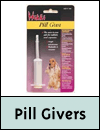
Obesity is becoming a bit of a problem in dogs with more and more cases reported each year. The trouble with an overweight dog is that they are at a high risk of developing diabetes, heart disease and joint problems which leads to trips to the vet and large bills. It is really vital that an owner doesn’t let it happen, but if it does to get on the top of the problem straight away. It may take a year for your dog to return to a normal healthy weight but it will be worth it.
You know when a dog is at the right weight when you can feel the ribs without there being any excess fat covering and from the side the dog’s belly looks as though it is tucked up. Looking at the dog from the above, you should be able to see a ‘waist’ in front of the dog’s hips. You should be able to count how many ribs your dog has by feeling, although not by looking as this may be a sign your dog is underweight.
Feeding your pet table scraps is the main reason a dog gains weight and it is strongly recommended that you don’t do this at all. Furthermore, many foods that we can enjoy are toxic to dogs such as onions and garlic.
To help slim down your dog, you should stick to your normal feeding schedule, yet simply decrease the size of the portions. Give the dog just 3/4 of the normal amount. If your dog gets a little ‘whiney’ about this, you can add a bulky vegetables to the dog food to increase the size without adding calories. Alternatively there are lower calorie foods available for dogs - your dog may not like these at first, however eventually they will get used to them.
If you feed your dog just once a day, it may be worthwhile trying out a new schedule of 2 smaller meals a day instead. Once they have eaten, take the bowl away immediately, even if there are a few biscuits remaining. Treats are completely banned if you are wanting to slim down your dog, unless you offer it a carrot or an apple which is fine.
Take weekly measurements of your dog to track the progress and watch closely the eating patterns. If your dog only nibbles at food, but does so all day long, it may be they are eating more than you thought, and in fact more than a gobbler would!
Exercise of course is important and dogs needs at least 2 walks a day. If your dog is really overweight, make sure they don’t overdo it in the exercise department at first. You can work up to a nice long walk eventually.
Do any of you have any comments or tips on how to slim down an overweight dog? Send in your comments below.
You know when a dog is at the right weight when you can feel the ribs without there being any excess fat covering and from the side the dog’s belly looks as though it is tucked up. Looking at the dog from the above, you should be able to see a ‘waist’ in front of the dog’s hips. You should be able to count how many ribs your dog has by feeling, although not by looking as this may be a sign your dog is underweight.
Feeding your pet table scraps is the main reason a dog gains weight and it is strongly recommended that you don’t do this at all. Furthermore, many foods that we can enjoy are toxic to dogs such as onions and garlic.
To help slim down your dog, you should stick to your normal feeding schedule, yet simply decrease the size of the portions. Give the dog just 3/4 of the normal amount. If your dog gets a little ‘whiney’ about this, you can add a bulky vegetables to the dog food to increase the size without adding calories. Alternatively there are lower calorie foods available for dogs - your dog may not like these at first, however eventually they will get used to them.
If you feed your dog just once a day, it may be worthwhile trying out a new schedule of 2 smaller meals a day instead. Once they have eaten, take the bowl away immediately, even if there are a few biscuits remaining. Treats are completely banned if you are wanting to slim down your dog, unless you offer it a carrot or an apple which is fine.
Take weekly measurements of your dog to track the progress and watch closely the eating patterns. If your dog only nibbles at food, but does so all day long, it may be they are eating more than you thought, and in fact more than a gobbler would!
Exercise of course is important and dogs needs at least 2 walks a day. If your dog is really overweight, make sure they don’t overdo it in the exercise department at first. You can work up to a nice long walk eventually.
Do any of you have any comments or tips on how to slim down an overweight dog? Send in your comments below.





